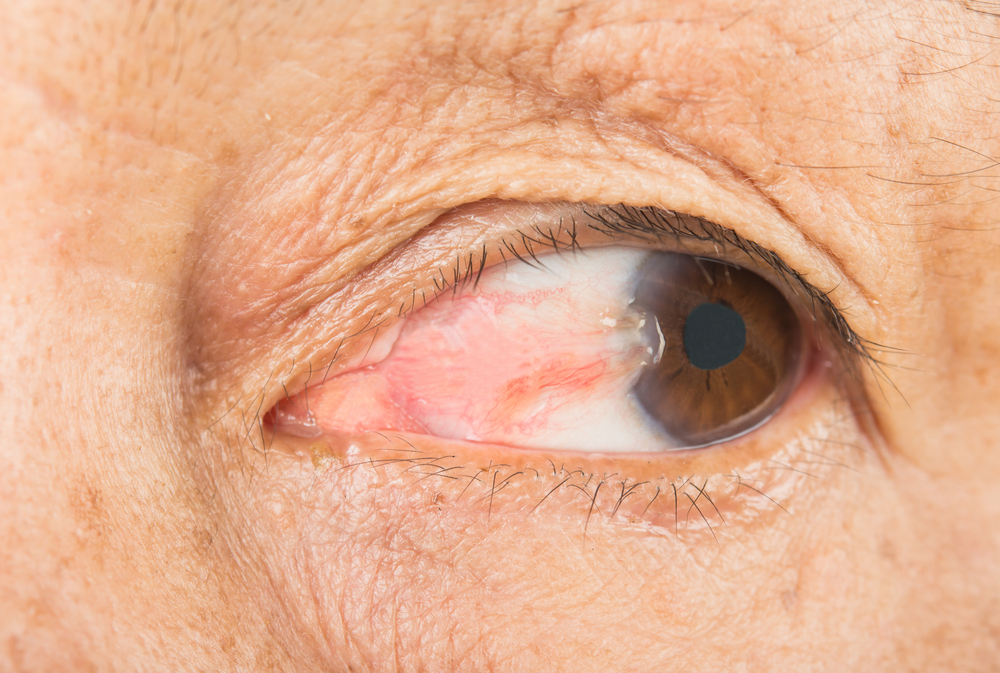Overview
A Pterygium is a reddish, fleshy tissue that grows in a triangular shape over the cornea. It usually occurs on the inner corner of the eye and grows towards the pupil, though it may also appear on the outer corner. A Pterygium tends to grow slowly and although relatively harmless, it could grow large enough that it covers the pupil or eye and as a result, interfere with vision.
What you need to know
Symptoms of Pterygium would include persistent redness, inflammation, foreign body sensation or dry and itchy eyes. In advanced cases, the Pterygium could invade the cornea thus affecting vision with the potential of induced astigmatism and corneal scarring.

Whats the cause
The exact cause for Pterygium is unknown however long-term exposure to sunlight, especially Ultraviolet (UV) rays has appeared to be the most likely contributing factor. Hence, Pterygium tends to occur more frequently in those who spend a lot of time outdoors and is more commonly found in hot tropical climates and usually within the people in the 20 – 40 age group. Additionally, Pterygium are twice as likely to occur in men than women and very rarely in children.
Prevention
Wearing protective sunglasses with side shields and/or wide brimmed hats and using artificial tear drops throughout the day may help prevent their formation or stop further growth. People that love the outdoors should wear eye protection that block 100% of the UV rays.
Treatment Option
Definitive treatment is achieved only by surgical removal. A variety of options are available for the management of Pterygium, from -irradiation, to conjunctival auto-grafting or amniotic membrane transplantation with glue and/or suture application. Long-term follow up is required as Pterygium may recur even after complete surgical correction.
When a Pterygium becomes red and irritated, eye drops or ointments may be used to soothe the inflammation. But this will not halt the growth. When the Pterygium grows too large and begins to threaten sight, we would recommend having it surgically removed. As part of the procedure, a patch of translucent skin called the conjunctiva is used to patch over the site of removal. Chances of a Pterygium growing back after removal are low. Though uncommon, a Pterygium may return but this usually affects the younger generation who are constantly exposed to the sun’s UV rays.

Contact an Eye Care Physician
People with Pterygium should be seen by an eye care professional annually, so that encroachment on the pupil can be recognized and treated before interference with vision. Call Eagle Eye Centre for an appointment if you have a Pterygium for evaluation and possible treatment.
